Oil and Baku goes hand in hand together. While the city was known as a producer of oil for well over a millennium, it was only in 19th century that its oil industry became, well, an actual industry. Tsarist Baku became a proper boomtown with oil tycoons, investors, tourists, and travellers from all around the world making their way into this bustling Paris of the East. This did not last very long, however, as following the Russian Revolution, the Soviet Baku became inaccessible to most foreigners quite quickly. Under the Soviet regime, the city blossomed into the city that it is today, one that still revolves around oil, but is much grander in scale. While Baku’s older and more recent history seems to be responsible for most of its current landmarks, I would argue that one can still find a lot of Soviet gems spread all around town today, though their numbers are certainly underwhelming. Let us take a tour around Soviet Baku, to see just what survives to this date.
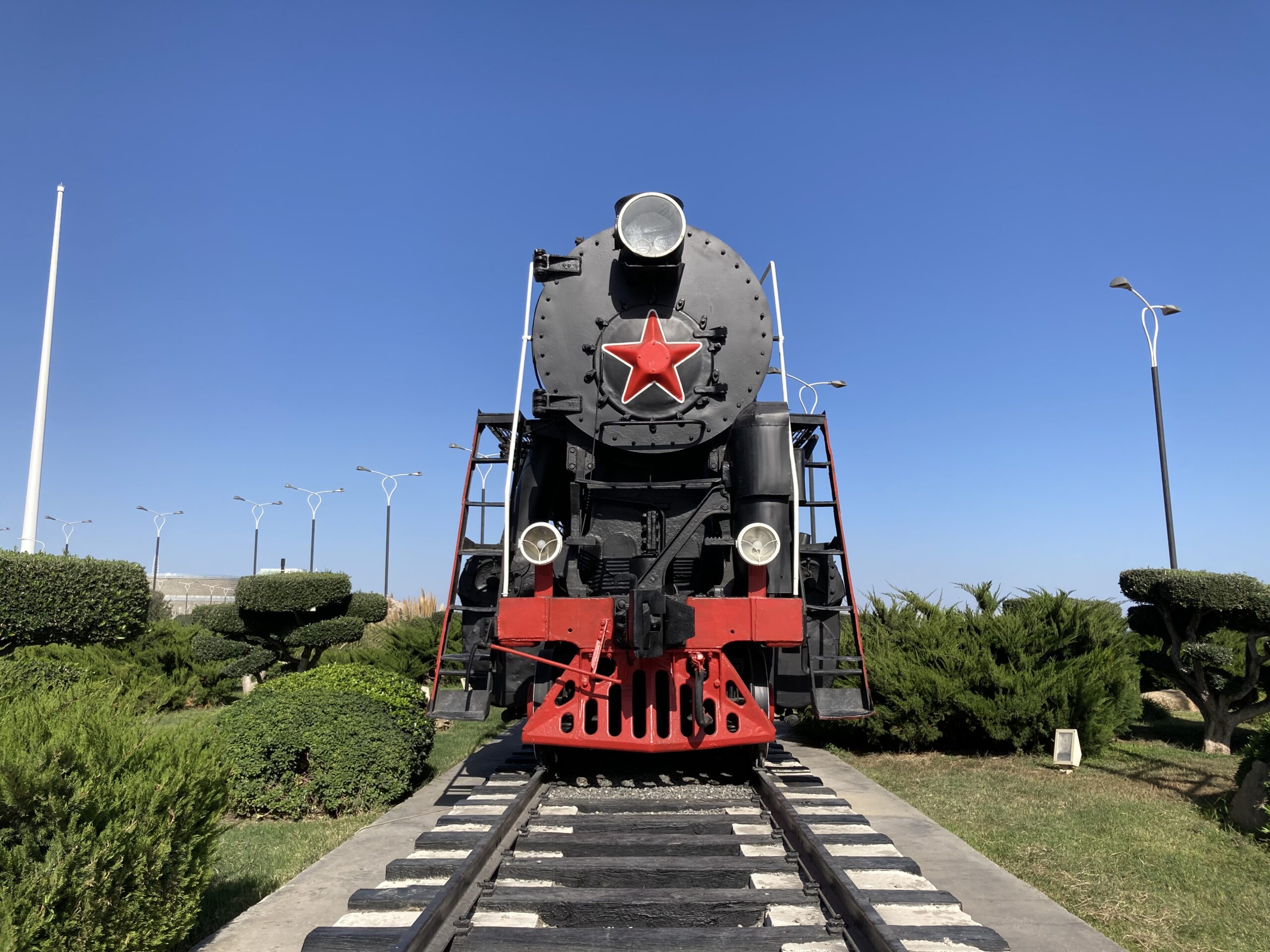
Infrastructure was one of the key areas that Moscow invested heavily in and around Baku. After all, the oil that was being drilled had to be distributed all around the massive Soviet homeland, and for that to happen, one needed pipelines, railroads, and ports. You can see all of these and more around Baku today, and there are a few remnants of the Soviet period intentionally being put on display as well, like this old timey train that you can find near YARAT Contemporary Art Center.
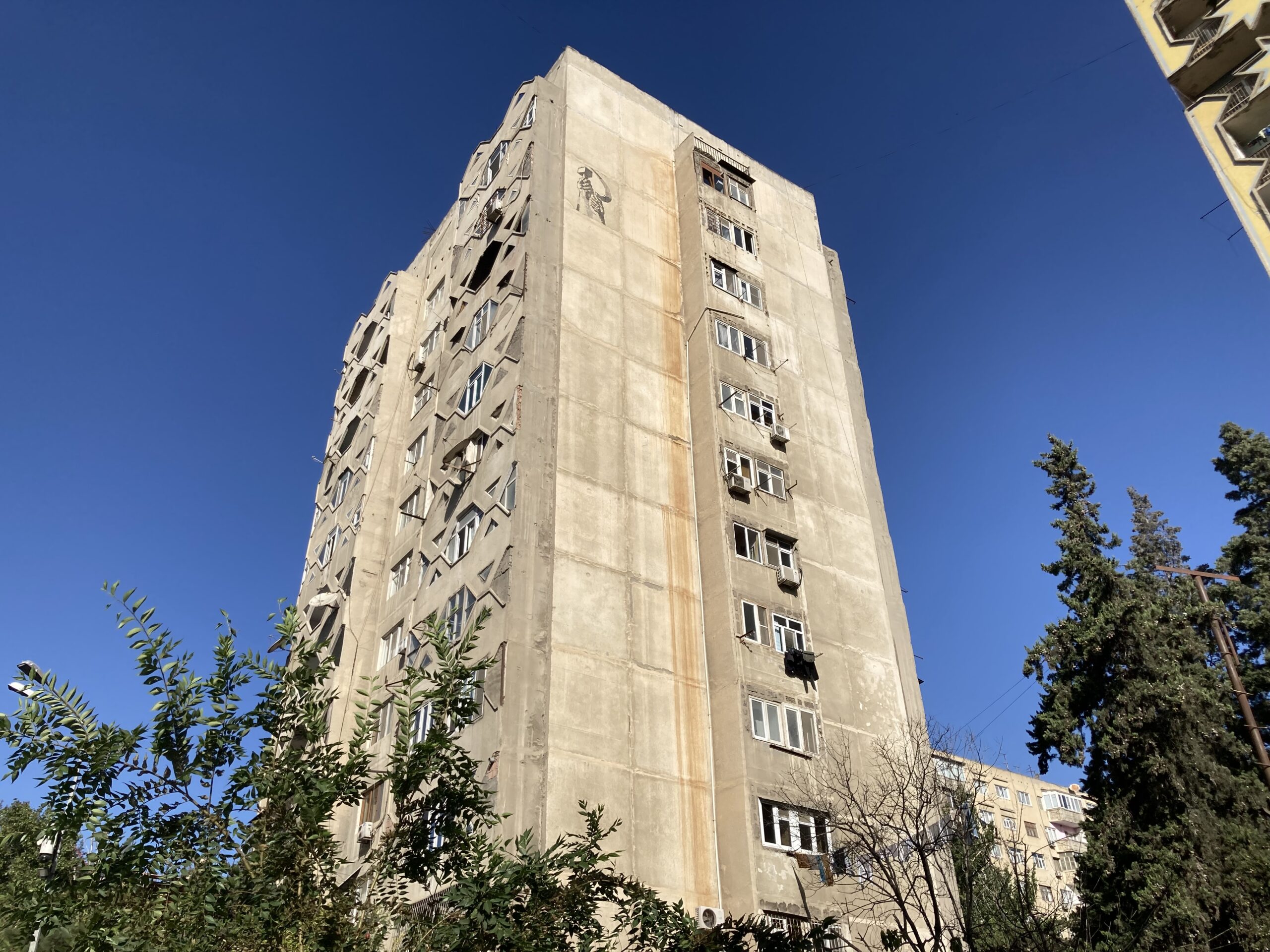
While infrastructure is nice and all, my eyes were seeking some Soviet mosaics. These are, unfortunately, much harder to come by. There are only a handful of such artworks that remain in Baku’s center today. While I am not even sure whether this is a mosaic or not, you can see the hammer and sickle still showing its face on the side of an apartment block near the Independence Square metro station on the outskirts of the city.
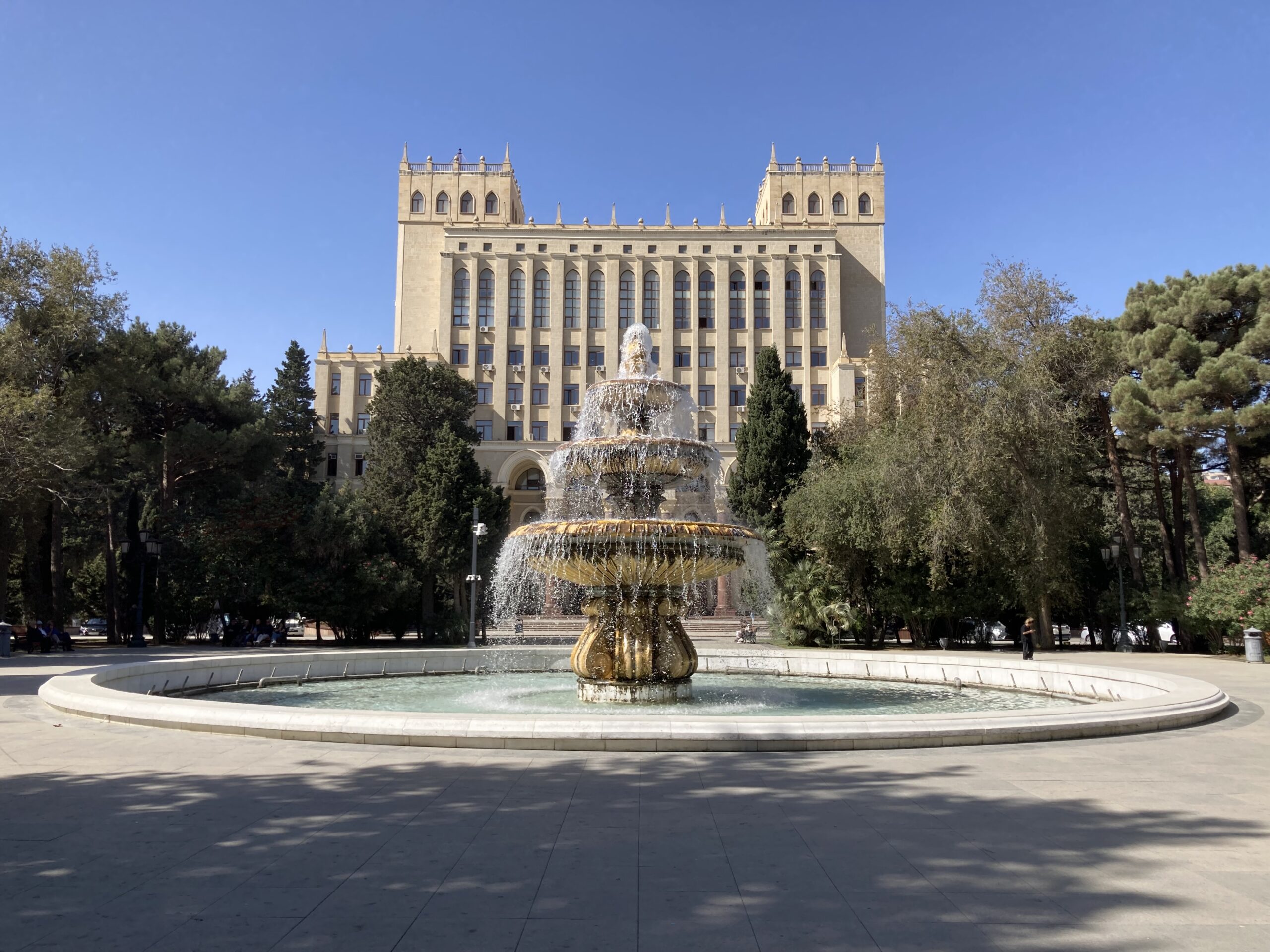
Thankfully, not much harm came to Soviet buildings, such as the Azerbaijan National Academy of Sciences. The Academy also has some other buildings, remnants of the Tsarist period, but this one was built firmly in 1960s.

The oil wealth of Azerbaijan means that it is prone to providing many views like this one, where the “Soviet” and the “modern” clashes with one another a bit too abruptly. What you are looking at above is a monument dedicated to a Soviet war hero with the backdrop of a modern funicular system right behind it.
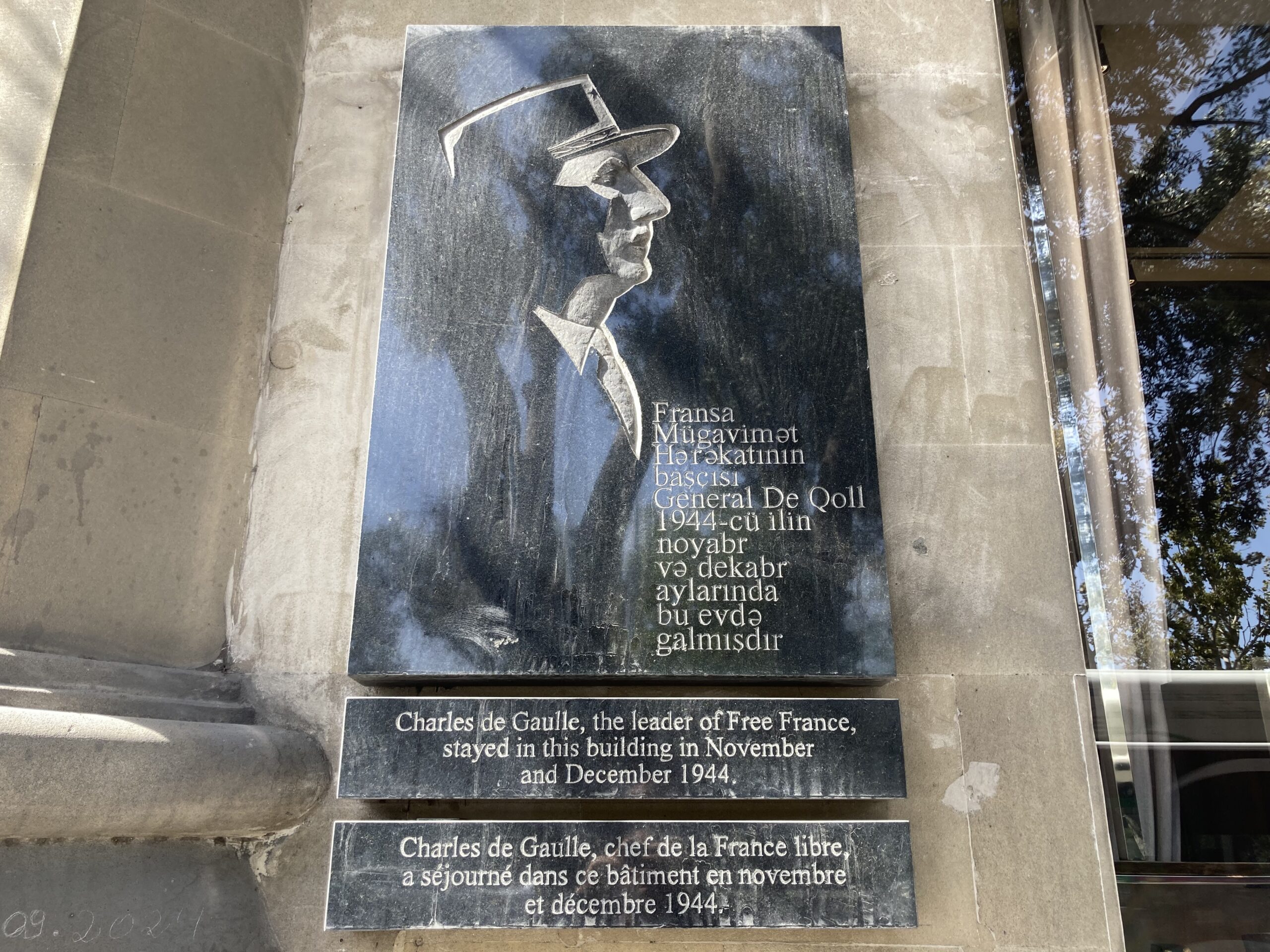
Speaking of oil, that black gold was why Baku played a pivotal role during the WWII, or the Great Patriotic War as it is often referred to in post-Soviet states. Furthermore, due to its favourable climate and geography, it was frequented by many during, before, and after that global conflict. Charles de Gaulle himself stayed in Baku for a few months as he led the forces of the Free France away from his long invaded homeland.
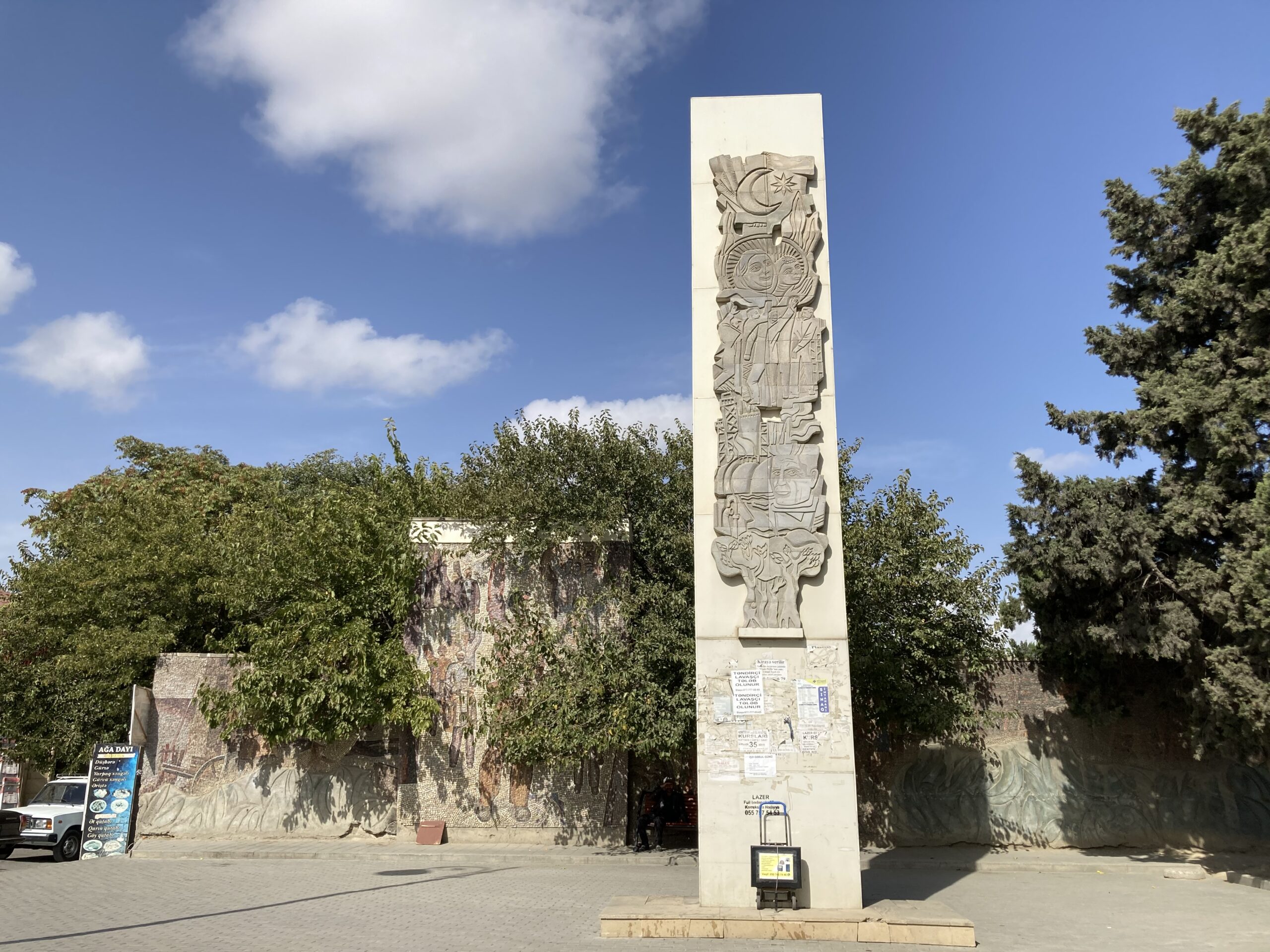
Let us now go back to Soviet art once again. While I did say that it is hard to find Soviet mosaics, it is not impossible. Suburbs of Baku still have a few well-preserved examples of this lost art. Here, in Surakhani, on the way from the Ateshgah of Baku to the Heydar Aliyev Museum, you can come across this small pillar with Soviet motifs on top.
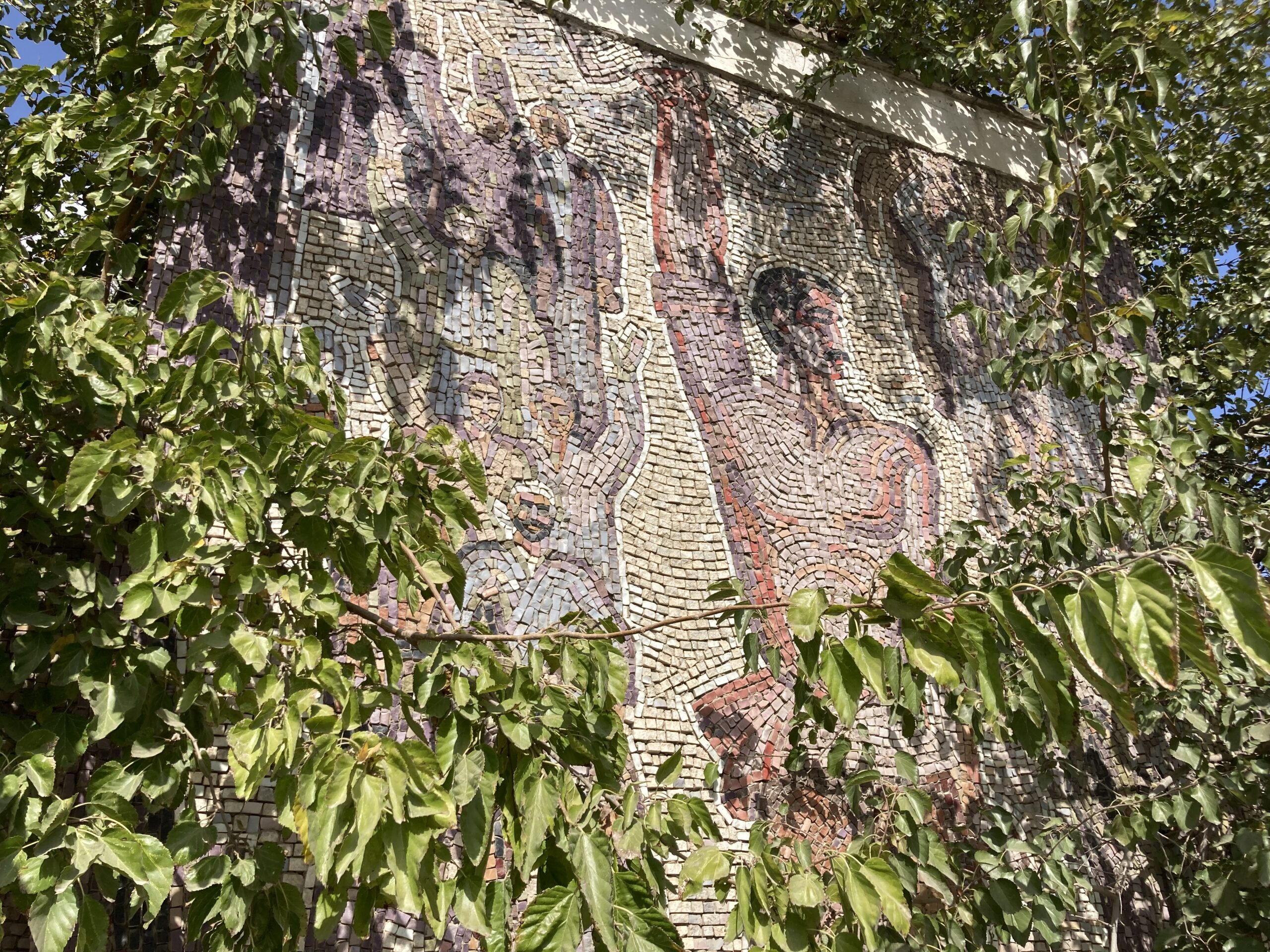
Just behind that pillar, one can find a mosaic that is somewhat hidden with all the greens around it. This is probably for the best, because I assume it being so well hidden was one of the reasons that it could survive the test of time (and a new regime) for three whole decades now.
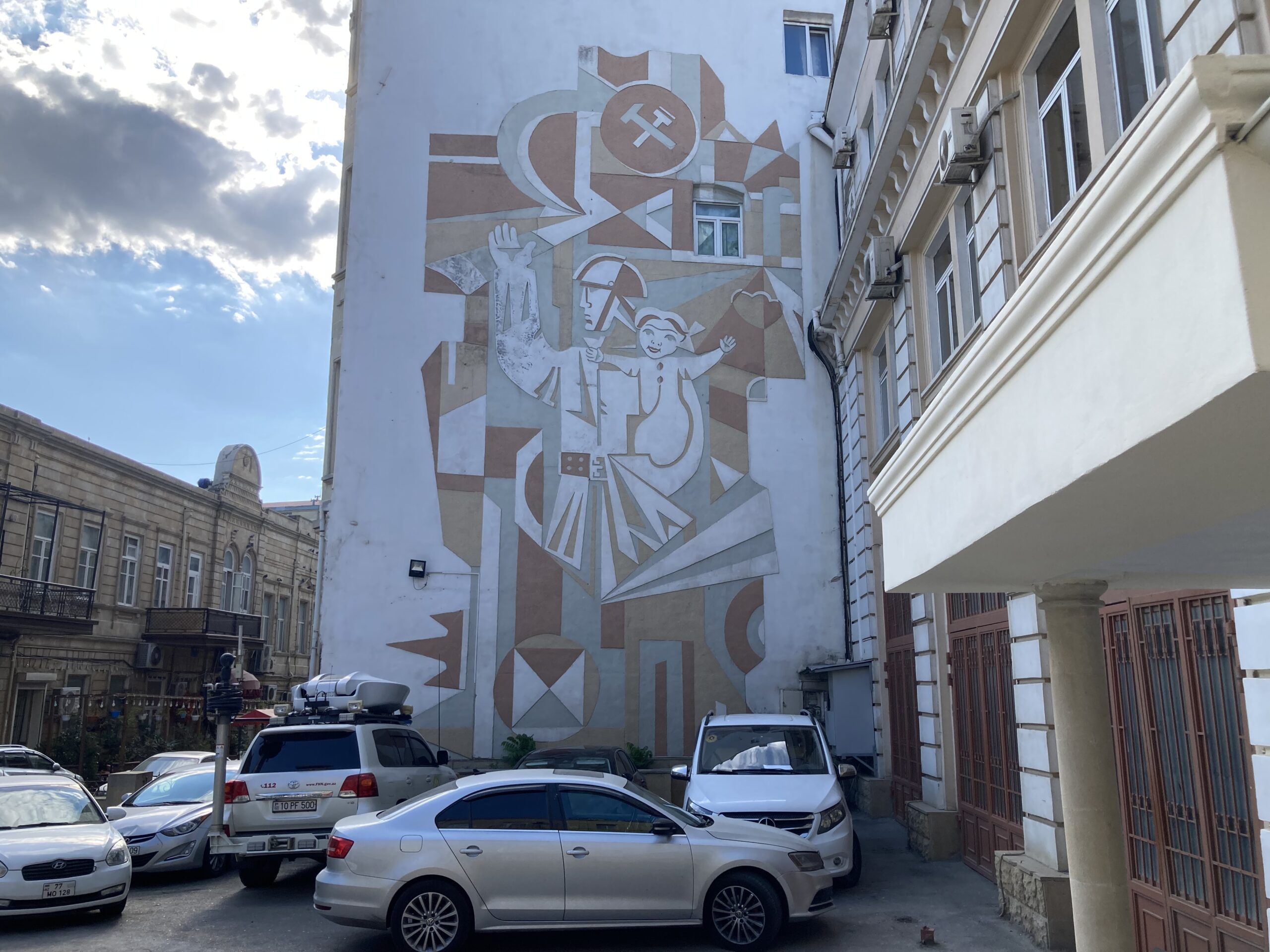
However, admittedly, there are some other Soviet artworks that did survive in the middle of Baku as well, despite being clearly visible from all sides. You can find this work across Pancho’s Mexican Food.
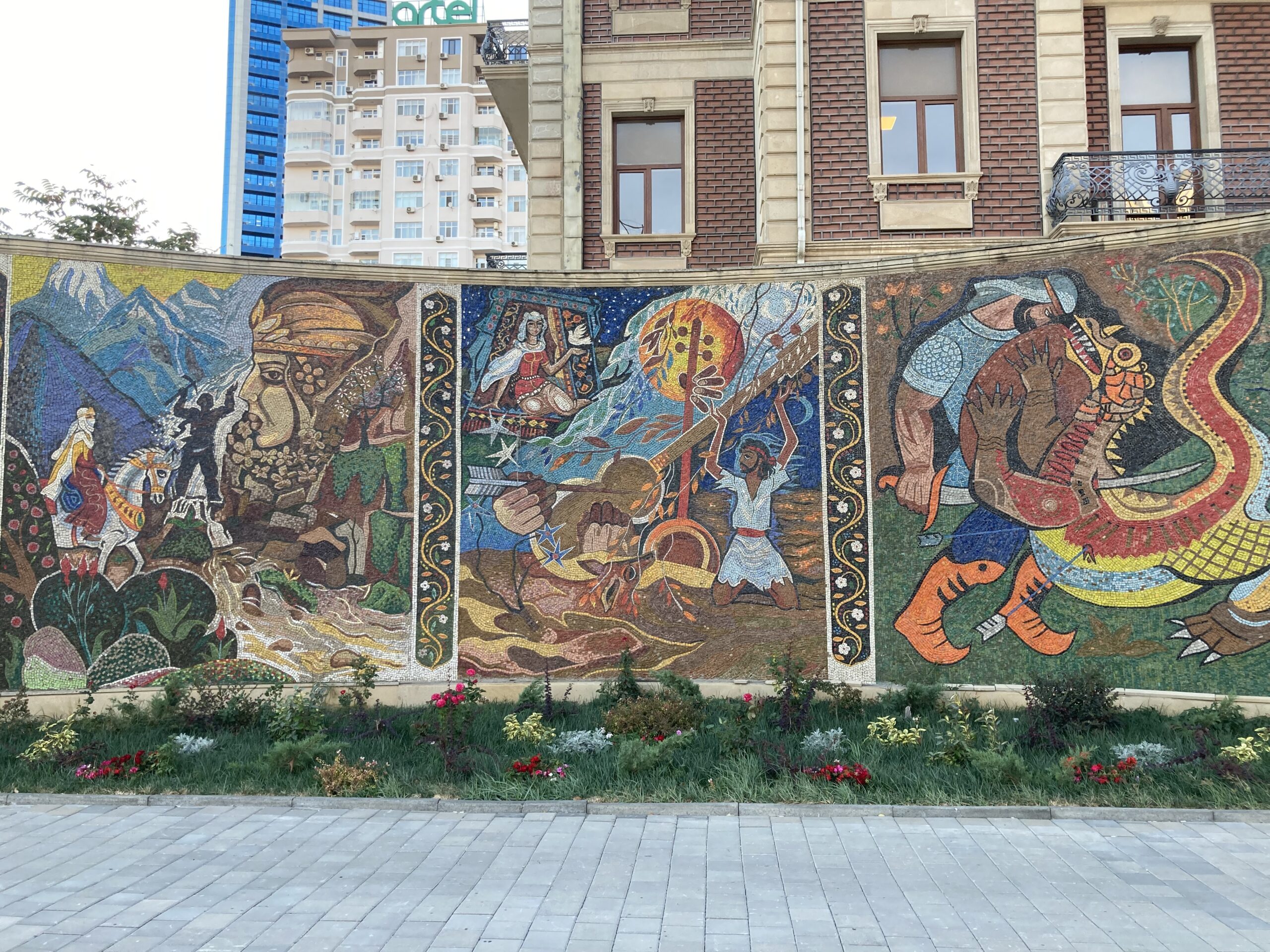
I was also lucky enough to just run into these mosaics near the St. Mary’s Catholic Church. They seem to tell tales from Azeri folklore, and they were all vibrantly coloured though the cloudy day I took these photos in means that I could not do justice to them.
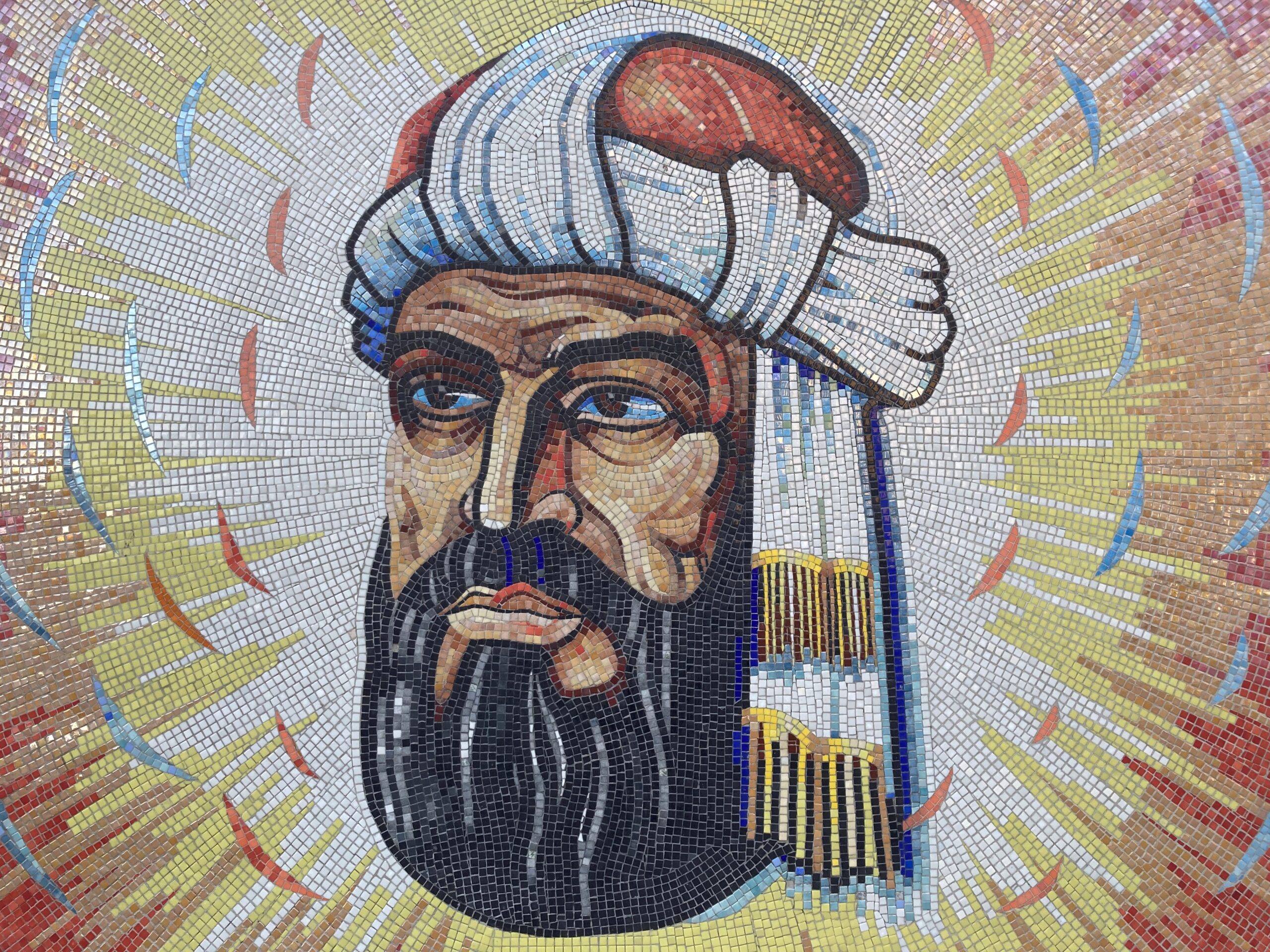
I have been told that these were Soviet mosaics, though the almost religious look of some of them certainly makes me wonder to what degree that may be the case. If anyone has any more information on these, I would be happy to edit this part!

One of my favourite Soviet traditions is none other than these plaques that are found plastered on the sides of buildings with some historical significance. Sometimes they are about the famous people that once lived there, or just the history of the area in general. This one is about the geologist who uncovered the Neft Daşları (Oil Rocks) on which the first off-shore oil drilling operation in the whole world started in 1951.
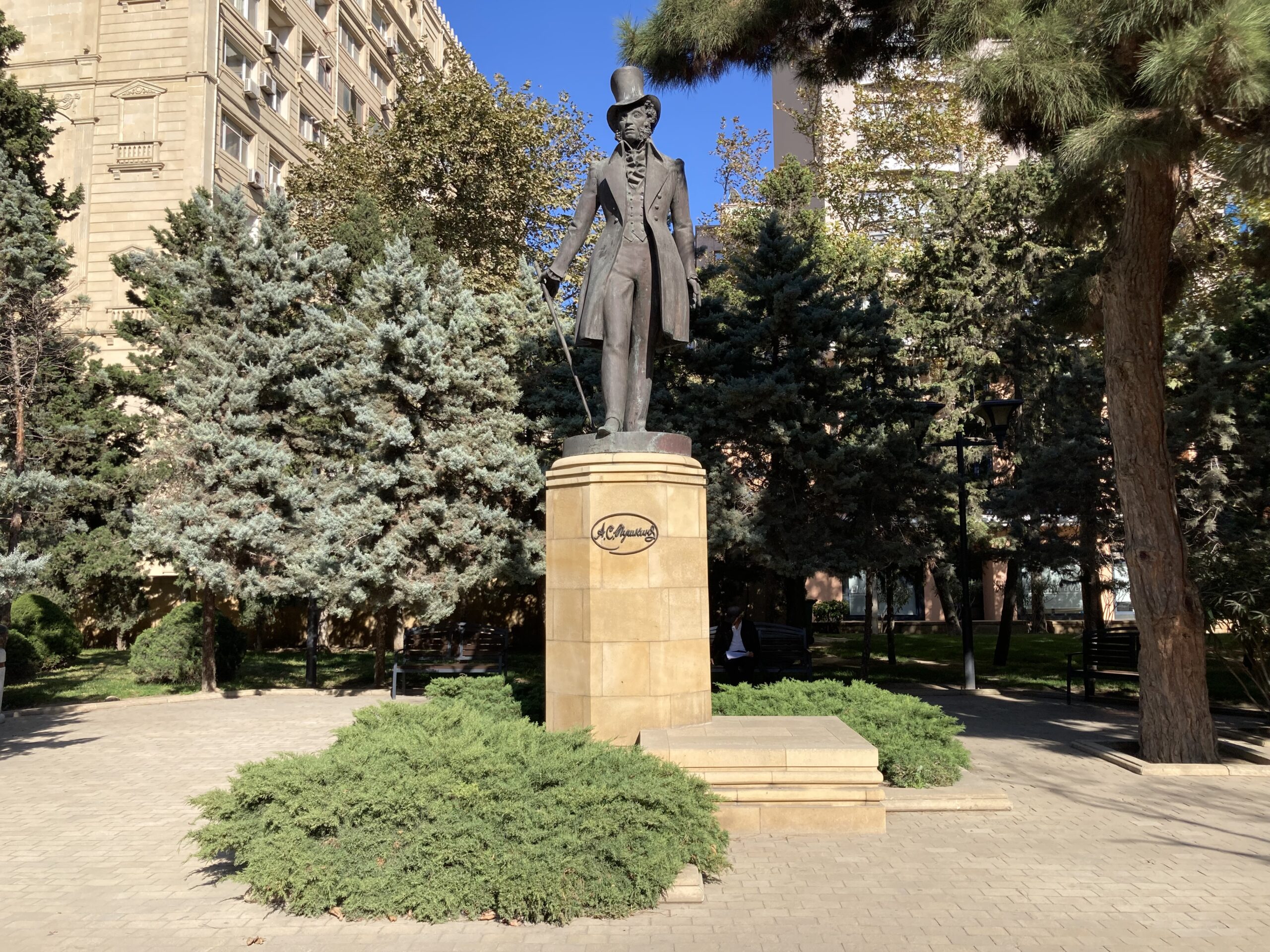
While all of this is hopefully interesting, I have to say that what is most interesting with Azerbaijan’s ties to its Soviet past is, just how little of the Soviet impact is felt today. While Soviet and thus Russian culture is visible all around, Azeris hardly speak any Russian among themselves, which is quite different than most post-Soviet states that I visited so far. In that way, Azerbaijan is one of the least Soviet post-Soviet states, and as such, I should not be surprised with the lack of Lenin statues or Soviet mosaics all around. There are, of course, still some Russian speakers around. There are some local Russians as well. There are also entire schools and universities teaching in Russian. However, there is a clear trend out there, and that is not Russian in any way.
Come back next week to see what Baku looks and feels like today!
